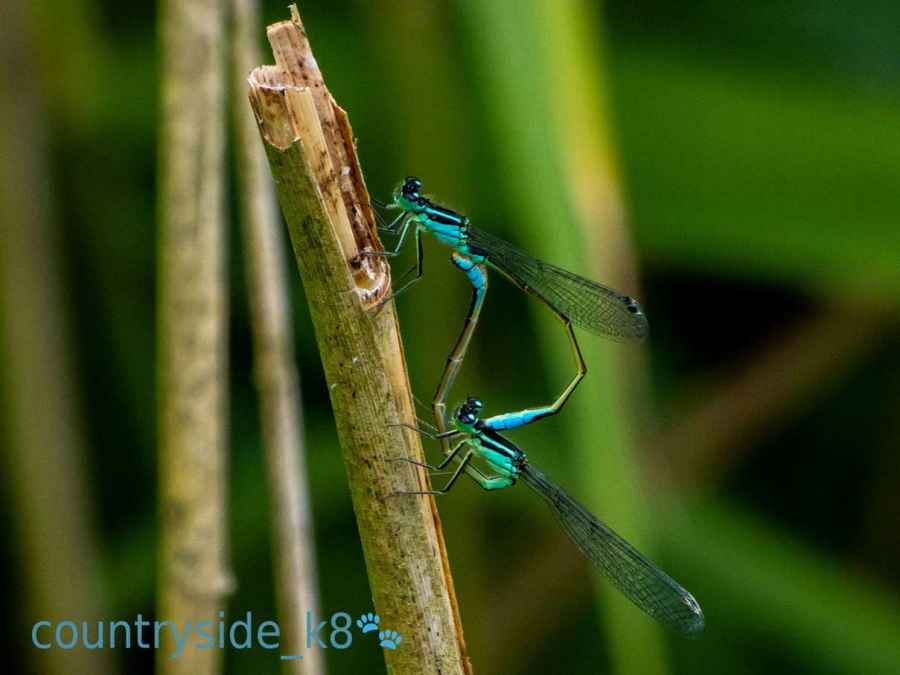
Blue-tailed Damselfly (Immature Female - form rufescens)
Blue-tailed Damselfly
Latin name: Ischnura elegans
The Blue-tailed Damselfly have an almost solid black abdomen and a blue ‘tail’ in males, though this can be brown in females. The male always has a blue spot at the ‘tail’, blue ante-humeral stripes on the thorax and blue eyes.
The female varies with at least 5 different colour forms. There are two immature female forms. The thorax markings and the tail spot are violet in the form ‘violacea’ and a salmon pink thorax and blue tail spot in the form ‘rufescens’. There are three forms when the female matures. The form ‘typica’ which is blue like the male, an olive green thorax and brown tail spot in the form ‘infuscans’ and a pale brown thorax and brown tail spot in the form ‘infuscans-obseleta’.
Male and female both have diamond shaped ‘two tone’ wing spots on the front wings.
They can be seen from April to September, occasionally into early October in a wide range of lowland habitats, ponds, lakes or slow-moving water including brackish water where it can be the only species present.
The Blue-tailed Damselfly is a very common species which can be found almost anywhere in Britain.
Created: 29 September 2018 Edited: 10 October 2018
Wild Roe Deer

Brett Gregory is an award-winning filmmaker based in Bolton whose production company, Serious Feather, is currently making a documentary about autism and poetry.
As a part of this production, Landscape Britain was asked to advise with regards to the location of specific areas of outstanding natural beauty throughout the region.
Visit www.seriousfeather.com for further information.

Own label and private label building products
We produce, brand and supply for some of the biggest names in the industry. Read more...







